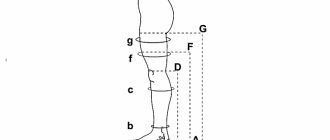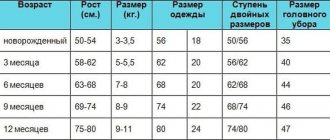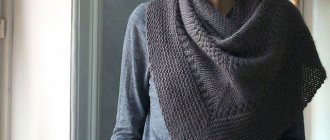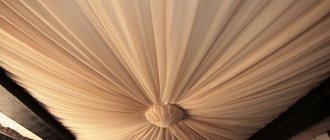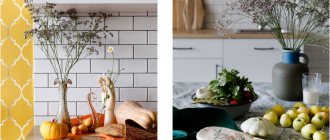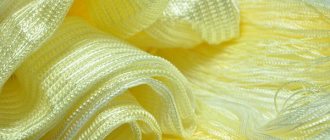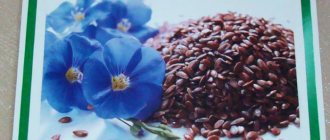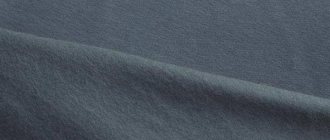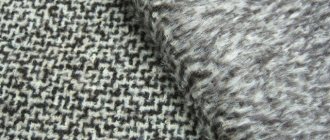When choosing fabrics for sewing, the weaving pattern is the main factor. It determines how the fabric will behave when cutting, sewing, conditions of handling and care. Different types of clothing have different materials and weaving patterns. You can understand it better by briefly familiarizing yourself with their main characteristics.
Simple circuits
A simple weave of fabric, known for several thousand years, is called such because... they are the easiest to work by hand, but are still popular.
Linen look
It is considered the toughest and most durable type of weave. It practically does not tear, is not prone to abrasion, and is not afraid of washing in hot water with bleach. The fabric fits very well and lends itself to sewing. For beginner tailors and seamstresses, this is the best start, as the edge does not fray or fray.
The linen look is characterized by a checkerboard pattern of threads. With it, the warp thread alternately interweaves each weft thread, which creates a sequential order.
If the plain weave is made from fibers of the same thickness, then the surface becomes even and smooth. In some cases, threads of different diameters are used. This type of fabric is characterized by ridges on one side.
There is also a weaving method called “crepe”. It is formed with high accuracy. This results in a very high-grain fabric. There is a slight roughness to the touch, which may give off a shine.
The linen look is woven from the following materials:
- Cotton. It produces calico, calico and cambric fabric.
- Linen. Canvas and trim.
- Silk. Georgettes, chiffons.
- Wool. Cloth.
This type of weaving serves as the basis for more complex patterns, as it can be modified by lengthening the floors and shifting them.
Twill look
Twill weave has many similarities with the previous type. However, there are 2 main differences:
- The report has a minimum of 3 threads. In plain weave, only 2 are found. The number of threads in the fabrics is decisive here, as it completely changes the quality of the final fabric.
- When moving to each next report, a shift occurs by 1 thread.
As a result, a characteristic diagonal scar is formed. It may vary depending on density. Increased grouping makes the scar steeper and more pronounced. As it decreases, it becomes less noticeable.
They are much denser, heavier, thicker in comparison with a linen stroke. Virtually indestructible. But at the same time it is slightly inferior to them in strength. It stretches well (especially when loaded diagonally) and drapes.
They are less convenient for cutting, since diagonally directed tension can distort the fabric. They are often made from cotton-wool mixtures.
Satin and satin types
They are distinguished by a pleasant, smooth surface and shine in the sun. The effect is achieved using a very rare weave of warp and weft. According to its qualities it is divided into 2 types:
- Satin weave fabric. It is formed if the outer side is represented by weft threads.
- Satin weave. The opposite of satin - the main threads are located on the outside.
Despite the softness, the material is very durable and wear-resistant. Resistant to hand or machine washing. Allows you to easily apply a design to the surface that does not deteriorate even with careless care.
To achieve gloss and brightness on the outside, extensions are made.
The weave is elastic. When stretched, it is not prone to tearing. At the same time, immediately after this it restores its original shape.
Traditionally, these types of weaves are made from natural silk with minor additions of other materials. But there are also purely cotton or linen fabrics.
It is important to note that satin is very similar to twill. The question may arise: “how is twill weave different from satin weave?” The answer is in their density and special diagonal stripes.
How to determine
The easiest way to determine the grain thread on a fabric is in a roll, because the warp always runs parallel to the edge of the fabric. It is more difficult to do this if you have to deal with a cut.
Method 1. Pull the fabric to the sides or diagonally: the warp fibers hardly stretch, unlike the weft. In addition, when stretched, the lobe thread produces a characteristic ringing cotton sound, while the weft thread sounds duller.
Method 2. Look through the cut into the light: the main threads are always smoother and create a clearer structure than the transverse ones.
Method 3. By type of material: if cotton and wool fibers were used in the weaving, then cotton fibers are considered shared fibers. If cotton and silk yarn were used, the silk forms a longitudinal thread.
Finely patterned patterns
Finely patterned patterns include 2 subtypes:
- Complicated simple ones. Essentially, these are the standard circuits presented above, but with a certain gain.
- Combined. They already represent a mixture of 2 different schemes, creating 3 new ones.
Reps
This is a modified plain weave. They are easy to distinguish by the characteristic scar that forms on the surface. Exists in 2 types:
- With a transverse rib. It is formed due to an increase in the overlap length of the main threads.
- With longitudinal. On the contrary, the weft threads lengthen.
Rep has a rather rare grouping of threads, which is why the fabric is very soft. But at the same time it has less strength and elasticity. When cutting them, it is important to observe the location of the direction of the scars. If it does not match, the canvas is likely to become deformed and unusable.
Gozhka
The weave of threads in a matting is very similar to that of linen, but also has some differences. The thread pattern is much more pronounced. The fabric is very dense, but at the same time soft and pleasant. It has high elasticity and is not afraid of tearing.
The weft thread and the warp thread are symmetrical to each other and form a certain square. The report can have a 2x2 proportion or an enlarged 4x4, as in the presentation.
Derived twill variants
Twill weaving has the most derivatives. Each of them differs from the original type by lengthening the floors. Therefore, the diagonals become extended and more pronounced. They can be one-sided or equal between the wefts and the warp.
Depending on this proportion, the following varieties are formed:
- Complex twill. It is distinguished by diagonals on the front side, which have different widths. As a rule, when writing, complex twill is defined as a fraction. In this case, the numerator indicates the number of threads, and the denominator indicates the displacement value. In some cases, the complex form is called multi-ribbed.
- Broken. Sometimes it is called Christmas tree due to the specificity of the diagonal pattern. It is characterized by broken lines at right angles. Because of this, a characteristic herringbone pattern is formed.
- Reverse. Twill weave fabric is similar to a houndstooth weave, but there is a shift in the design. This makes the shape of the diagonals more unusual.
Derived variants of satin and satin types
Derivatives of these types include modified and reinforced fabrics. For example, in reinforced satin with 8 threads of each weft row there are also 2 warps and 6 wefts. As a result, the fabric is much stronger.
Finely patterned combined schemes
Combined patterns include composite types of weaves in which they alternate. In this case, alternation occurs and an unusual pattern is achieved.
Types with longitudinal or transverse stripes
Relatively modern types of weaving. They are interesting because it is possible to combine any simple species without losing their identity. On the finished canvas they fold into interesting shapes. It is possible to achieve a diamond-shaped pattern, cross-shaped, square, etc.
The following types often alternate:
- Rep mixed with a linen look. A neat, pleasant fabric with high strength is formed. It is not afraid of stretching and at the same time has a characteristic graininess.
- Broken twill with matting. The result is a specific mixture of herringbone and square patterns.
Combinations are chosen randomly, depending on the specific pattern desired. It is important to follow the rule of pattern difference. The scars should go in different directions, not overlap and intertwine into one new one.
Crepe schemes
They are simple schemes, but with arbitrary extension of the floors. In some cases, they are created by combining two different types of weaving. The resulting pattern will be similar to silks formed using crepe twisting.
Due to its properties, crepe turns out to be very capricious. It shrinks easily even under normal conditions, but at high temperatures and humidity it deteriorates sharply.
Nonwovens
The first known non-woven fabrics were felt and batting. Weaving techniques were used for production, and the materials themselves did not have a structure of longitudinal and transverse threads.
Its production began about 90 years ago. Various raw materials are used for its production:
- synthetic (polyamide, polypropylene);
- natural (viscose, linen, cotton, wool);
- recyclable materials.
Various methods of bonding fibers are also used (mechanical, chemical, thermal, combined). This made it possible to significantly save on waste and the production process itself, as well as produce materials with completely new characteristics.
Nonwoven fabrics can be fire-retardant, absorbent, water-repellent, tear- and wear-resistant, very soft and extremely rigid. They are often used in the manufacture of protective clothing and items for doctors and rescue services, for the manufacture of hygiene products, bed or table linen.
However, no less often it is used for the lining (non-woven fabric) and top of coats and raincoats, for shirts and robes, dresses, blouses, beach and stretch sportswear (elastane, nylon).
Relief drawings
Depending on the different ratio of protruding weft and warp. This is how 3 popular groups of weaving are formed:
- Waffle;
- Diagonal;
- Rubchikovoe.
To create relief, an extension of the floor is used. The pattern is formed diagonally thanks to a rib with an angular direction. Its convexity depends on the selected shift and its warp thread thickness.
Scar diagonals are often arranged in pairs in each report. They can be directed either at an angle or strictly vertically, which creates a pseudo dive.
The elongated overlaps are responsible for creating a gap in the waffle weave. The threads pull together long gaps, forming individual wafer groups. The gaps are made thanks to the linen type. Since they are less dense, they are better translucent, which creates that same cellular relief. These types can also be combined with each other, which gives them a special shape.


